STATE OF THE ART: The Studio Cameras…A Primer On Innovations
STATE OF THE ART: The Studio Cameras…A Primer On Innovations
The best way to illustrate the current configurations of camera platforms is with this set of images from Conan O’Brien’s “Tonight” show, taken for us by Bruce Oldham, who was Camera 3 with Conan for many years. Below is a typical setup…a Canon DigiSuper studio lens and a Sony HDC 1500 camera, and some interesting mounting as we will explore in detail. Now is the time to look closely if you have never seen this kind of arrangement.

Above is what is now called a “studio buildup kit.” Below is a Sony HDC 1000, and it’s called a “hard body” camera. This is the configuration most of us are familiar with, as this is was the traditional design since there was such a thing as television.
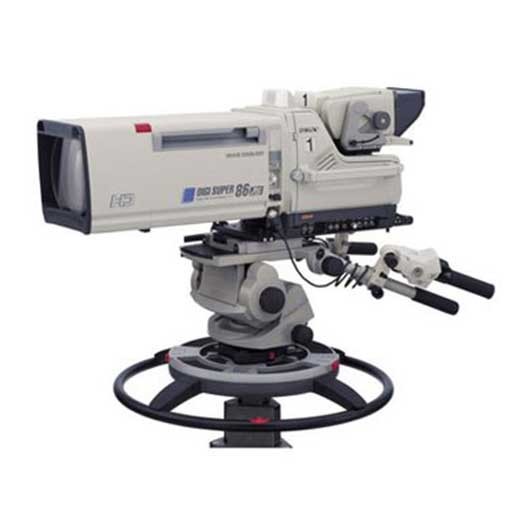
The first departure from the norm came from RCA when they introduced the TK760, which in essence was a ‘hard body’ chassis with an RCA TK76 ENG (Electronic News Gathering) camera inside. The TK76, was their first shoulder mounted color portable, but with in the 760 configuration, the 76 gained a full size box lens and full size viewfinder.
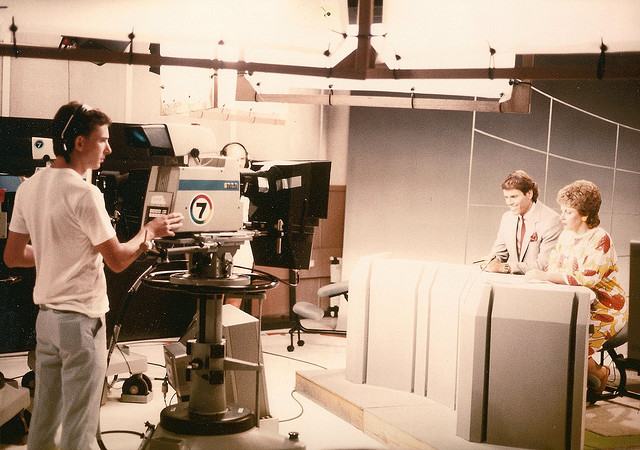
Above, the RCA TK760 with and TK76 inside…below, the RCA TK76. Both cameras have a 1976 vintage.
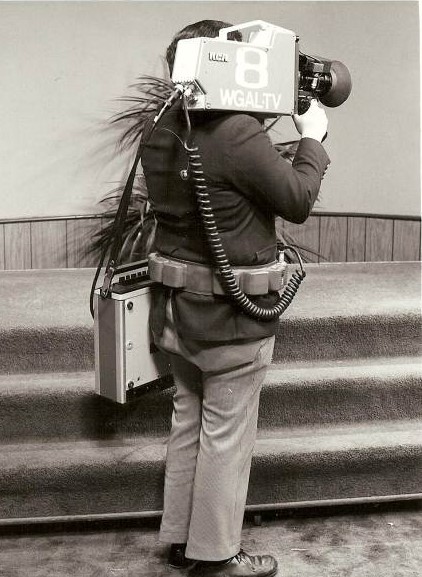

If you haven’t quite caught on yet, this should do the trick. Do you notice the difference in the light and dark parts of the camera? Well, that’s because these are two unique elements. Below, you can see the sled’s back opened up to reveal a small ENG/EFP-size camera inside. In this case, the camera is a Sony HDC 1500.


Okay, here’s what is going on. Above is the Sony HDC 1500 (Hi-Definition Camera) and below is the Sony HDLA 1505. (HDLA means “Hi Definition Lens Adapter.”)

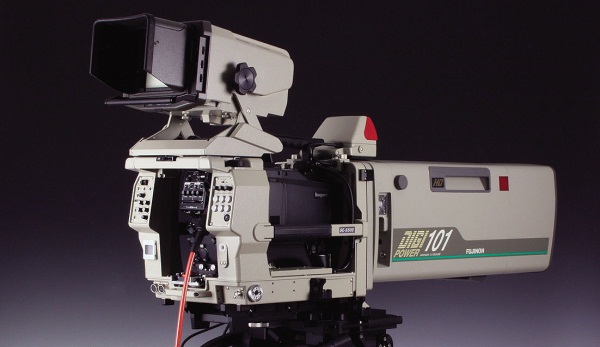
Ikegami has a slightly different version of its build-up kit, called a System Expander. Above is the Ikegami SE S500 in the studio. Below is yours truly behind an Ikegami HDK 79EX III with the SE S500 field configuration. Chuck Pharis took the picture at the University Of Georgia’s Sanford Stadium while I was visiting him at work the day before game day. Below that is the Ikegami HDK 790 EX III hard body camera.
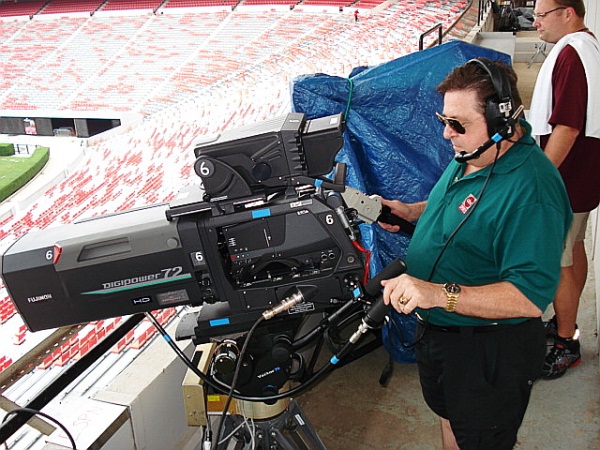
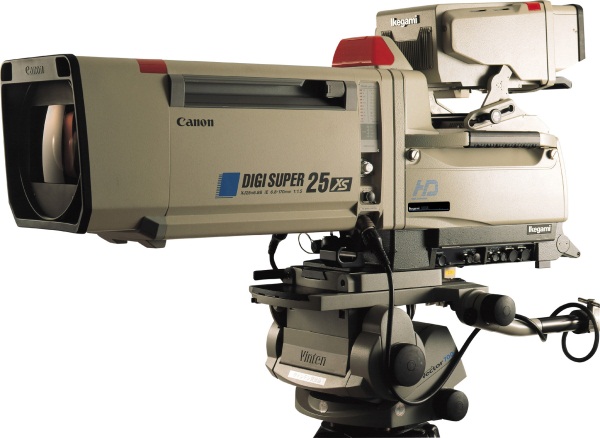
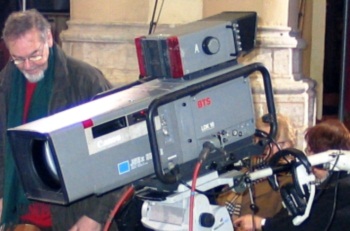
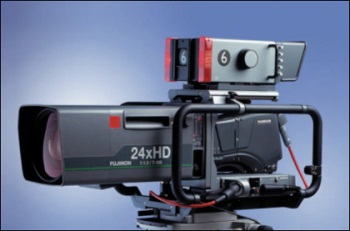
Thomson did something like this in the 1990s and called it a “sled.” One each side, you can see their sled that started as an easy new way to move their big cameras without taking them apart, like the LDK 9. A few years later, Thomson had a better idea, and mounted an ENG camera in the sled as you can see on the right. The arrangement sidesteps the need for ‘hard body’ cameras and allows the small camera to be quickly and easily removed from the large lens adapter for maintenance and repair, or for use in the field or studio as a hand-held with quick addition of a smaller EFP-style lens. Call me old-fashioned, but I still like hard bodies.
Before we go further, let’s talk about ENG and EFP. ENG stands for “Electronic News Gathering” cameras.The term started with the RCA TK76 that debuted in 1976. EFP, which stands for “Electronic Field Production” cameras, is a new manufacturers designation for the same small cameras most of us still refer to as ENGs. I may be wrong, but I think the difference is mostly in the usage. ENG cameras are usually sound-equipped and are used in “stand alone” point-and-shoot, news-gathering situations. EFP cameras have no audio capabilities, are usually used in pairs or threes, and require setup time, cables and switchers.

Above and below are more interesting new technical developments. Above, we see a camera using the standard EFP-style camera lens instead of the large Canon box lens. Below is a great side-by-side comparison shot.

As mentioned above, the camera itself can be used in the studio with the large or small lens configurations. The small lens allows for quick use of the camera as a hand-held medium. In the-hand held mode, the camera’s eye piece viewfinder must be used. When mounted, one of several kinds of large viewfinders can be used with the Sony Large Viewfinder Adapter. This can be seen in the two images below. Upper image is the Sony HDLA1507US catalog image; the real thing is seen just below.



Closer looks at the EFP large viewfinder adapter’s use are above and below. With Sony, when the camera is seated in either the viewfinder adapter or larger lens adapter, the power and controls of the camera are partially transferred to the control panel on the back of the sled, as seen in the image below.


We’ll close with a couple of camera shots that show Bruce’s camera 3 (above) and the main interview set. Below, a full large lens adapter kit was in use next to Andy’s podium; to the right, the smaller EFP camera is naked. It’s just mounted on a light weight ped and ready to go hand-held instantly. Bruce’s camera was one of the three large lens cameras mounted on the new Vinten Quattro peds, and was equipped with a Canon 72X DigiSuper lens. It did guest close-ups at home base and other zones. The other two large lens cameras had Canon 27X DigiSuper lenses and were cameras 1 and 2. All together, there were nine cameras with eight operators in the studio. Cameras 4 and 6 were the combo hand-held and ped-mounted. Camera 5 was the jib, and 7 and 8 were robo-cams with one operator. There were also 2 Iconix lockoff lipstick cameras for audience shots.
